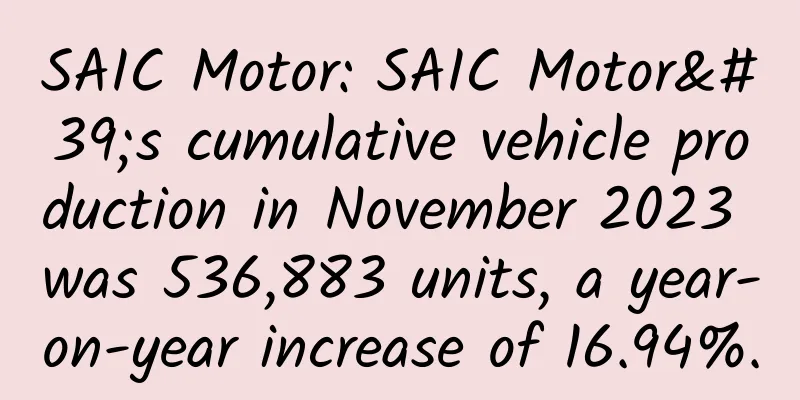The turbulent power battery market: How can we stand out?

|
The prospect of continued rapid growth in electric vehicle sales is unquestionable, and power batteries are an important component of the cost of electric vehicles. With the adjustment of national policies and increasingly fierce competition in the electric vehicle market, the challenges facing the rapidly expanding power battery industry are becoming more prominent: the market entry threshold has been raised and polarization is serious. Enterprises without core technologies and lack of large-scale production capabilities are facing the risk of being eliminated. What factors are the key to determining the success or failure of an enterprise? The global transformation of electric vehicles is coming. Strong policy support and continuous technological progress are the core driving forces for the development of the electric vehicle industry. For example, the US government provides income tax credits of up to $7,500 for the purchase of electric vehicles. The Chinese government has also set ambitious goals and has repeatedly introduced new energy vehicle purchase subsidy policies, making China the country with the fastest growth in electric vehicle sales in the world. In response to the challenges of subsidy reduction and cost competition, what factors are the key to determining the success or failure of a company? The prospect of continued rapid growth in electric vehicle sales is unquestionable. However, with the adjustment of subsidy policies and the increasing rationality of the market, market competition will become increasingly fierce. The US government is already considering canceling the income tax credit mentioned above. The market generally believes that if this move is implemented, it will have a huge impact on the popularity of the electric vehicle market; in China, there are also endless discussions on the reduction/cancellation of subsidies for electric vehicles (new energy vehicles), and the discussion of replacing policy-driven with market-driven is becoming more and more intense. Data shows that in 2017, China's overall subsidies for new energy vehicles decreased by 40% compared with 2016. At the same time, electric vehicles with high energy density and long driving range have become the object of encouragement by the Chinese government: pure electric models with a driving range of less than 150KM will have their financial subsidies cancelled; the government will also refine the subsidy levels for models with a driving range of more than 150KM, and increase subsidies for models with long battery driving range. Power batteries are an important component of the cost of electric vehicles. Against the backdrop of national policy adjustments, the challenges facing the rapidly expanding power battery industry are becoming more prominent: market entry barriers have been raised and polarization is serious. The advantages of high (high-quality) production capacity and technology-driven companies are becoming more prominent. At the same time, the number of Chinese automotive power battery companies has decreased from about 150 in 2016 to less than 100 in 2017, among which the number of lithium iron phosphate battery manufacturers has declined particularly significantly. Companies without core technologies and lack of large-scale production capabilities are facing the risk of being eliminated. In response to the challenges of subsidy reduction and cost competition, which factors are key to determining the success or failure of a company? 1. Technology route: tracking the continuous development of technology Due to its advantage in energy density, ternary lithium batteries will play a leading role in future changes; their disadvantages compared to lithium iron phosphate batteries in terms of manufacturing costs are also catching up. Energy density: In China, a series of policy documents have pointed out that clear requirements have been put forward for the energy density of single batteries for passenger cars: it must reach 300Wh/kg by 2020 and 500Wh/Kg by 2030. Among the power battery technologies that have been commercialized, ternary lithium batteries will be the only type of battery that can meet the national standards in 2020, and its energy density advantage has been widely recognized. Manufacturing cost: AEK Consulting predicts that with the economies of scale brought about by the increase in production capacity and the improvement in production efficiency brought about by the optimization of production processes, the manufacturing cost of ternary batteries will continue to decline in the future. Although affected by the recent rise in cobalt prices, it should not be a problem to break through the RMB 1,000 per kilowatt-hour mark within two years. Safety and service life: Through technical improvements (such as more stable battery management systems and cooling systems), the safety of ternary lithium batteries will be improved, and the cycle life of the battery will also be greatly improved, reaching 1,200 times/nearly 15 years of service life in 2020. Based on the analysis of technical routes, the market demand for ternary lithium batteries will grow rapidly and shipments will also increase rapidly. Looking at the future automotive power battery market, in addition to ternary lithium batteries, a series of new technologies are also emerging and will have a long-term impact. For example, polymer solid-state batteries use solid electrolytes themselves, and have outstanding energy density and safety. Considering energy density, the battery limit of liquid lithium batteries will be 400-500Wh/kg, while the theoretical energy density of solid-state lithium batteries can reach 2.5 times that of liquid lithium batteries. At the same time, due to the absence of electrolyte, sealing will become easier, and no additional cooling equipment and electronic controls are required, which improves safety. In addition, solid-state lithium batteries also have advantages in terms of service life, so they are highly anticipated by the market. Toyota announced at the end of 2017 that it had made significant progress in solid-state lithium battery research and planned to start selling cars powered by solid-state lithium batteries in 2022; Hitachi even plans to put solid-state lithium batteries on the market by 2020. In China, many companies and research institutions have also entered the solid-state lithium battery research competition; companies including CATL and AVIC Lithium Battery have announced that they are accelerating the development and industrialization of solid-state lithium batteries. We should also note that solid-state lithium batteries still have problems such as high manufacturing costs, insufficient solid/solid interface stability, and low electrolyte conductivity. Although these problems will be gradually solved, the possibility of a leap forward is not great. Ai Kai believes that early commercial solid-state lithium battery products may be put on the market before 2022, but solid-state lithium batteries will need to wait until at least 2025-2030 to achieve large-scale industrialization and become the mainstream of the market. 2. Capacity construction: Accelerate capacity layout and reduce costs by increasing capacity In the next few years, the global power lithium battery production capacity will expand rapidly and reach 180GWh in 2020. China will be the country with the fastest global capacity expansion. It is estimated that by 2020, China's power lithium battery production capacity will reach between 60% and 65% of the world's total; the United States' production capacity will rank second in the world. At the same time, insufficient production capacity makes it impossible to generate economies of scale to meet the challenges of cost competition, which is likely to be a more serious problem faced by small and medium-sized enterprises. With the adjustment of subsidy policies and the pressure from downstream car manufacturers, the gross profit margin of power battery companies will be squeezed. To survive, they must expand production capacity and maintain their leading advantages in production capacity and cost. We call power battery factories with an annual production capacity of more than 20GWh "giant factories". Owning a "giant factory" will be the best embodiment of the competitive advantage of power lithium batteries in the future. The advantage of reduced manufacturing costs brought about by the expansion of production capacity is obvious. Tesla believes that its new super factory can help reduce its battery costs by more than 30% in the future; and CATL has maintained an annual battery cost reduction of about 15% in the past two years through technology upgrades and capacity expansion. Of course, the rapid expansion of production capacity will also bring huge financial risks. Therefore, strategic cooperation with downstream car manufacturers is an important means to reduce risks. The $5 billion joint venture between Panasonic and Tesla to build a factory is the most well-known example of power battery companies and vehicle manufacturers cooperating to cope with competition and risks. In China, the competition for such cooperation opportunities has also entered a white-hot stage: SAIC and Dongfeng have invested in CATL respectively, BYD announced a joint venture with Guoxuan High-tech, etc., which are all regarded as forward-looking layouts. 3. Value chain extension: appropriate vertical integration, control of key resources or nodes Automotive power battery companies (and some electric vehicle companies) have taken vertical integration as the foundation for the future. On the one hand, vertical integration can reduce costs and improve efficiency. On the other hand, vertical integration will bring about the synergy of upstream and downstream advantages, allowing automotive power battery companies to stand out and maintain their advantages in the process of industrial transformation in the next few years. Electrode Materials Affected by the rapid growth in sales of automotive power batteries, the demand for power battery raw materials will also grow rapidly; the growth in demand for ternary lithium batteries will drive a substantial increase in demand for non-ferrous metals such as lithium, nickel and cobalt; among them, the stable supply of cobalt and nickel is of great significance to whether the demand growth can be met in the future: Cobalt: With the further promotion and large-scale application of ternary lithium batteries, the demand for cobalt has a tendency to increase significantly, causing the price of domestic cobalt to continue to rise. The rapid growth rate is beyond the expectations of many people. Nickel: The "high nickel" trend will drive the growth of demand for nickel sulfate; and domestic environmental protection pressure will also limit the expansion of nickel production capacity to a certain extent, and the scarcity of nickel sulfate is emerging. Lithium: The demand for lithium carbonate is growing rapidly, but the capacity layout is lagging behind, resulting in a short-term supply-demand gap and driving up prices. Lithium battery manufacturers and major consumers can appropriately deploy upstream and strengthen control over raw materials. Affected by the rise in cobalt prices, the competition for cobalt resources between technology companies and car companies has entered the open. Apple is negotiating long-term purchases of cobalt metal from mining companies, and plans to seek stable contracts for the next five years or even longer; Tesla and BMW and other companies have clearly announced negotiations with mining companies to ensure the supply of battery materials. In China, CATL, BYD and others have strengthened the layout and control of upstream battery materials through various means in 2017, stabilizing the supply chain of upstream materials. As ternary lithium batteries are further promoted, the demand for most raw materials will be further increased; at the same time, the new production capacity in the short term is limited, which makes the market worry that the prices of these raw materials will rise further in the next 3-5 years. However, we expect that as the market enters the reaction period, the increase in production capacity and even the emergence of alternative materials will make the prices of raw materials begin to stabilize or even fall within 2-3 years. Take cobalt as an example: global electric vehicle sales will continue to grow, and the growth trend of cobalt demand will not change; but at the same time, the increase in production capacity of existing projects and the launch of new cobalt mining projects (the database shows that there are about 400 active potential cobalt mining projects in the world) will gradually keep up with production capacity. In the longer term, it is also possible to replace cobalt with other electrode materials. Some companies (such as Johnson Matthey in the UK) are already developing electrode materials with lower cobalt content and reducing dependence on cobalt by increasing nickel content and other means. Therefore, we expect that after 2019, unless there are special factors (for example, the instability of the situation in Congo, the main production area), the price of cobalt will stabilize and fall, but it will not fall back to the low point before 2017. In the long run, automotive power battery companies should still strengthen their control over upstream resources and make appropriate investments. Battery Materials From the perspective of the proportion of battery raw material costs, positive electrode materials account for the largest proportion, accounting for about 30% of the entire battery, and will further increase in the future. It is the core value of the entire power battery; at the same time, electrode materials are also the main direction for major battery technology companies to seek breakthroughs. In China, except for the separator, several major battery materials have been well localized: for positive and negative battery materials, strengthening R&D and technology-driven investment should be the primary direction of future development; for the separator, a core component of the battery, domestic technological breakthroughs have been achieved, and investment support is needed to form industrialization and replace imports. For electrolytes, the improvement of the competitiveness of domestic electrolyte manufacturers and the expansion of production capacity have caused the profit margins of foreign-funded electrolyte manufacturers to fluctuate, and investment in the short term should be considered with caution. For investment in battery materials, the control of the value chain should be strengthened, appropriate vertical integration should be carried out, and key upstream resources or production technologies should be controlled. Vertical integration is a future trend, but we also need to be wary of the risks brought about by market factors such as accompanying financial pressure, policy uncertainty and upstream material price fluctuations. Looking at the surging electric vehicle power battery market, change is unstoppable. Everyone knows the market opportunities, but risks and competition coexist with opportunities. How can we stand out and remain invincible? Ai Yikai believes that companies and investors should advance both in terms of technology and capacity upgrades. Technically, the era of ternary lithium batteries has arrived, but we must always pay attention to the emergence of new technologies and make early arrangements; in terms of capacity, we need to reduce costs by capacity and consider the cooperation between battery companies and car manufacturers to gain benefits and control risks. At the same time, maintaining core competitiveness through vertical integration of the power battery value chain and adding weight to ourselves in future competition is also the key to success. As a winner of Toutiao's Qingyun Plan and Baijiahao's Bai+ Plan, the 2019 Baidu Digital Author of the Year, the Baijiahao's Most Popular Author in the Technology Field, the 2019 Sogou Technology and Culture Author, and the 2021 Baijiahao Quarterly Influential Creator, he has won many awards, including the 2013 Sohu Best Industry Media Person, the 2015 China New Media Entrepreneurship Competition Beijing Third Place, the 2015 Guangmang Experience Award, the 2015 China New Media Entrepreneurship Competition Finals Third Place, and the 2018 Baidu Dynamic Annual Powerful Celebrity. |
<<: Who benefits from the double points game?
Recommend
Liquid robots become a reality, inspired by sea cucumbers
Produced by: Science Popularization China Author:...
What does Kuaishou merchant account mean? What are the differences between Kuaishou merchant accounts and Kuaishou accounts?
As a short content platform with strong sociality...
How powerful is Google's Go program AlphaGo? 30,000 times more powerful than IBM's Deep Blue
The first match between man and machine Go - Goog...
Information flow account building and optimization techniques, a must-read for advertising!
When doing information flow advertising, I swear ...
The "Tyndall effect" appears in the cloudy sky of Beijing. Why does light have a shape?
On the morning of April 20, affected by the cold ...
The truth is out! Why are there no poop on the eggs sold in supermarkets? It turns out that there is this secret
Eggs are a necessity for many people and have hig...
Xiaohongshu Promotion: After cleaning up KOLs, can we still “plant grass” well?
On May 10, Xiaohongshu announced the "Brand ...
Feishu-9 Lectures on Digital Tools for Organizations: Advanced Tools Make Organizations More Advanced
Feishu-9 Lectures on Digital Tools for Organizati...
360 Points Promotion Tutorial [Detailed Lecture]
Learn to master: Learn the relevant knowledge of ...
The Essential Guide to App Store ASO: 3 Steps to ASO Optimization
ASO provides free, high-quality users to your And...
Be careful of waist aging before aging! These postures are the most harmful to waist...
Sitting for a long day at work and lying down lik...
How to operate and promote APP? Familiarize yourself with these 4 points first!
The four most important points in APP operation a...
What are the benefits and functions of SEM marketing?
There are many large and small online marketing t...
Spring is here, and love songs are playing! But... do animals mate for reproduction?
"One day of floating life is one lifetime of...
Development of a mini program for booking and checking-in at a homestay in Guangzhou. How to promote the mini program for booking homestays?
Nowadays, homestay accommodation is becoming more...









